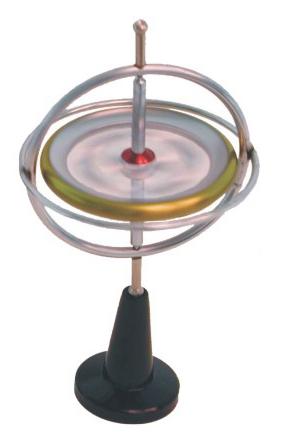Educational Physics Toys
Physics toys allow one to see first hand the different principles of physics in action. They are an easy and inexpensive way to visualize certain concepts which would otherwise be difficult to grasp.I'm going to list some physics toys below which are both fun to use and interesting to observe.
The Rattleback

The rattleback (also known as the Celtic stone, or wobble stone) is a fascinating object. You spin it in one direction, it slows down, wobbles, and then starts spinning in the opposite direction!
The video below shows a rattleback:
The counter-intuitive behaviour of the rattleback is difficult to explain in a physics sense. I gave it a stab once, and what I came up with is that the rocking motion of the rattleback creates a dynamic imbalance that causes it to spin the other way. It's a chain of dynamic events, and understanding the rattleback means understanding the chain of events that cause it to first slow down, and then spin in the other direction. Spinning it in one direction results in it just spinning normally. But spinning it in the other direction causes a secondary rocking motion to be set up which causes the rattleback to slow down, stop, and then spin the other way. This is all due to the non-symmetric shape of the rattleback, which creates uneven mass distribution.
A detailed explanation of the rattleback is the stuff of advanced physics courses. Indeed, its behaviour defies intuitive explanation.
The Gyroscope

The gyroscope is fascinating because when you spin it, it is able to precess and spin around in a circle, all while defying gravity!
The video below shows a toy gyroscope:
The behaviour of a gyroscope is explained on my web page: Gyroscope Physics.
Maxwell Wheel

This suspended wheel continuously winds and unwinds up and down a string. It demonstrates the principle of potential and kinetic energy. The wheel gradually loses height each time it winds back up the string, due to friction losses, so energy is not conserved.
The video below shows a Maxwell's Wheel:
Newton's Cradle

Newton's cradle demonstrates Newton's third law, and the conservation of momentum.
The video below shows a Newton's cradle:
Euler's Disk

Euler's disk is a large heavy disk that spolls (spins and rolls) for 1-3 minutes before coming to a stop. It is similar to spinning a coin on a flat surface, but it lasts much longer.
The video below shows Euler's disk:
The behaviour of Euler's disk is explained on my web page: Euler's Disk.
See also the science toys page.
Return to Learn Physics page
Return to Real World Physics Problems home page
Free Newsletter
Subscribe to my free newsletter below. In it I explore physics ideas that seem like science fiction but could become reality in the distant future. I develop these ideas with the help of AI. I will send it out a few times a month.